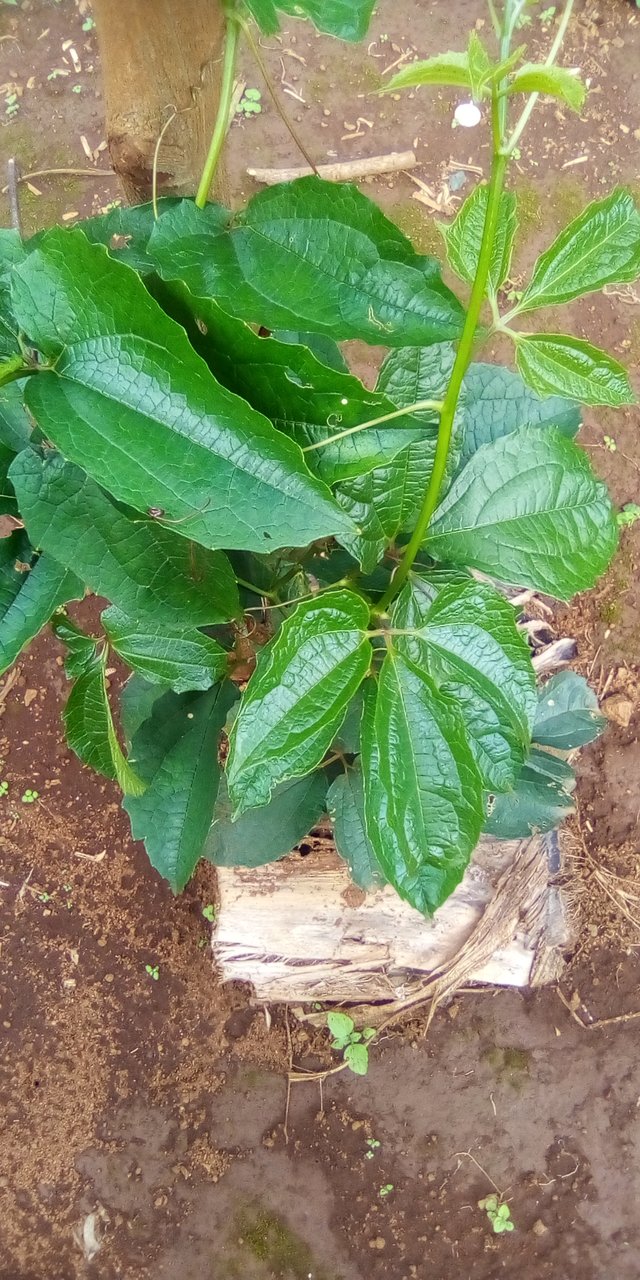Telfairia occidentalis (ikongunong)
Telfairia occidentalis is a tropical vine grown in West Africa as a leaf vegetable and for its edible seeds. Common names for the plant include fluted gourd, fluted pumpkin, ugu (in the Igbo language), and ikong-ubong (in the Efik and Ibibio languages). T. occidentalis is a member of the family Cucurbitaceae and is indigenous to southern Nigeria.The fluted gourd grows in many nations of West Africa, but is mainly cultivated in southeastern Nigeria and it is used primarily in soups and herbal medicines.Although the fruit is inedible, the seeds produced by the gourd are high in protein and fat, and can, therefore, contribute to a well-balanced diet. The plant is a drought-tolerant, dioecious perennial that is usually grown trellised.

T. occidentalis is traditionally used by an estimated 30 to 35 million people indigenous people in Nigeria and part of Africa, including the Efik, Ibibio, and Urhobo.However, it is predominantly used by the Igbo ethnic group, who continue to cultivate the gourd for food sources and traditional medicines. A recurring subject in the Igbo’s folklore, the fluted gourd is noted to have healing properties and was used as a blood tonic, to be administered to the weak or ill.It is endemic to southern Nigeria, and was an asset to international food trades of the Igbo ethnic group.
Woman of Africa chopping ugu for soup.
Considered an “oil seed”, the fluted gourd is high in oil (30%).Shoots of T. occidentalis contain high levels of potassium and iron, while seeds are composed of 27% crude proteins and 53% fats. The leaves contain a high amount of antioxidants and hepatoprotective and antimicrobial properties.
The young shoots and leaves of the female plant are the main ingredients of a Nigerian soup, ofe egwusi. The large (up to 5 cm), dark-red seed is rich in fat and protein and can be eaten whole, ground into powder for a kind of soup, or made into a fermented porridge.
T. occidentalis is typically grown vertically on trestle-like structures; however, it can be allowed to spread flat on a field.A beneficial outcome of growing the gourd flat is the suppression of weeds, especially when intercropped with a tall, upright plant such as maize. The growing period begins in April or May when seeds are planted;[5] the first leaves and shoots can be harvested after a month and can be collected every 2–4 weeks thereafter. Seeds are planted directly in the soil, typically in groups of three to increase output in a case of a failed germination. Fruit is typically harvested between October and December. The seeds are subsequently collected and dried; a portion of them are consumed, while the remainder are stored for the following planting season. Although dependent upon soil type, the fluted gourd is able to ratoon and subsequently produce many flushes of fruit over long periods.It is able to ratoon with the highest degree of success in well-drained soils. It is propagated using the seeds. Its seed is housed in another greater covering or hard shell which protects it from harm. It survives drought and can retain its life in the root even after many years. It is a creeping plant and grows well if staked with bamboo sticks.
The edible seeds can be boiled and eaten whole, or fermented and added to ogili.The fluted gourd has been traditionally used by indigenous tribes as a blood tonic, likely due to its high protein content.Flour produced from the seeds can be used for high-protein breads.